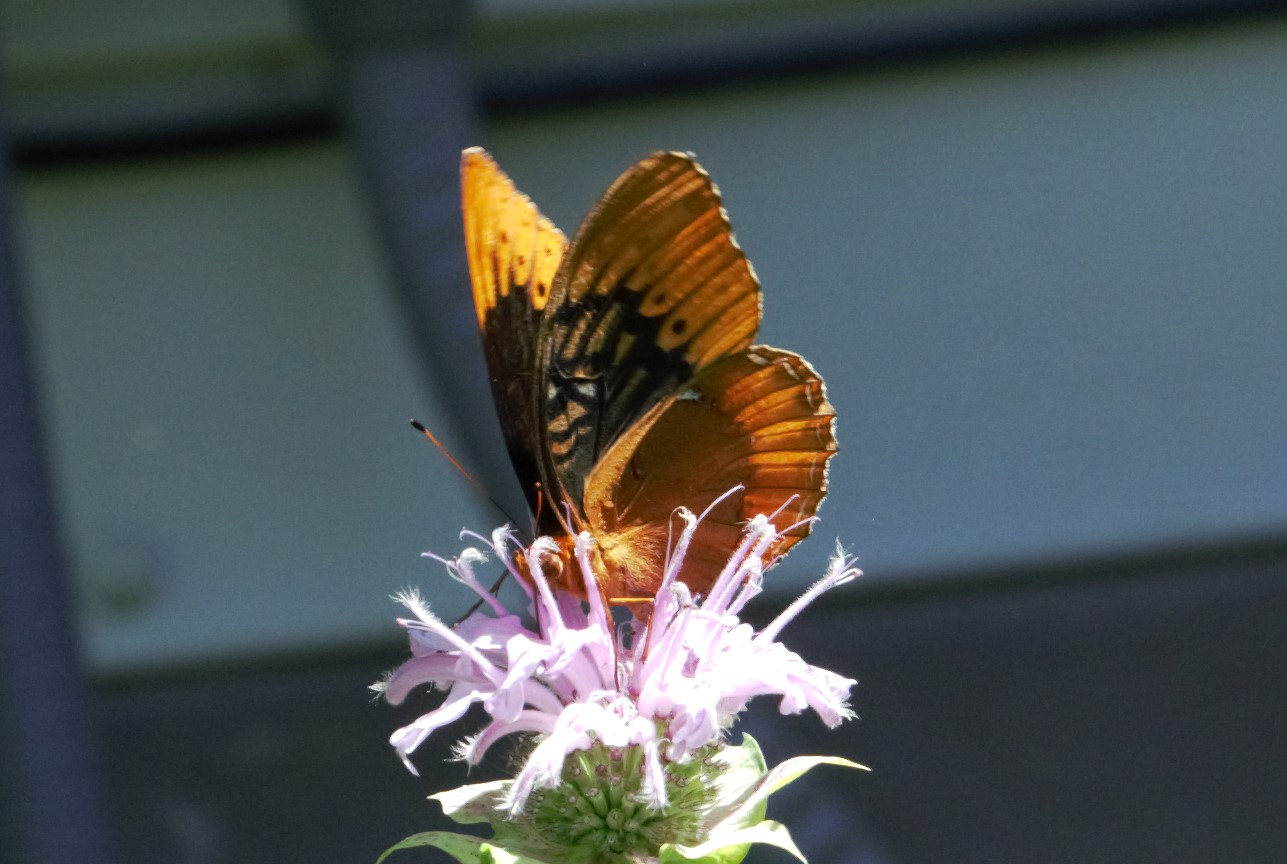Pink Evening Primrose for the Win
Views: 5481
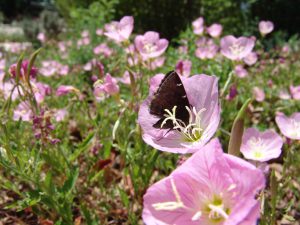
As I observe my evening primrose blooms, it will always fascinate me to watch how flower beds evolve over time. Over the course of several years, I watched two titans duke it out in one of my favorite flower beds. This bed had a hill in the center, and it was surrounded by a concrete driveway. It was in all ways an inhospitable place: no irrigation; very little moisture retention; poor, sandy soil. It was planted with Autumn sage, a variety of salvia, China Doll roses, liatris, and iris.
Bermuda Grass
In one corner of my botanic boxing match was an invasive non-native: Bermuda grass. Its scientific name, Cynodon dactylon, sounds like some terrifying dinosaur, capable of conquering anything and everything that gets in its way. Bermuda grass is everywhere here; it’s our most common turf grass, and it feeds our cattle. If left to its own devices, it will eventually invade any and every flower bed. It just so happened that it was already well established in this flower bed, and I did not do enough to get rid of it when I started planting. So Cynodon dactylon had home turf advantage, even though as a species, it is an invader.
Pink Evening Primrose
In the other corner was a single root of a single plant: Oenothera speciosa, also known as pink evening primrose, pink ladies, showy evening primrose, or Mexican primrose. I don’t remember where I got it. It was a curiosity, and I’m not certain I even knew what it was at the time. But I planted it, unsure of what to expect, and then watched it in amazement.
To say that it came out of its corner aggressively is an understatement. In the poor soil of my native bed, it never reached above 12-inches tall, but it spread by rhizomes and seed, quickly filling in the bare dirt between the other plants.
Oenothera speciosa likes to form colonies. The foliage forms thick, tangled mats. Over the course of about five years, these impenetrable mats eventually choked out, yes, even Bermuda grass. Oenothera never completely knocked out Cynodon, but Cynodon was smothered in the areas where Oenothera was well-established. It was a victory for a native.
Of course, my pink evening primrose also choked out other plants that didn’t have any height to them, so it put limits on what I could plant in the same bed. But it was worth it. Oenothera speciosa is glorious when blooming.
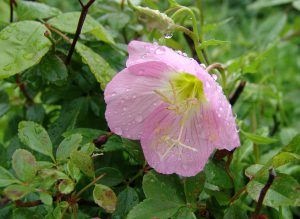
As the name suggests, most varieties of evening primrose bloom in the evening. Mine, however, bloomed in the morning, closing only in the brightness of afternoon. Starting in March with a flood of pink, they’d bloom off and on all season. Native to prairies, Oenothera speciosa is hardy in a variety of soils, moisture contents, and light. It is very drought tolerant and sometimes would go dormant in August when the heat and drought were worst.
Wildlife
Pink evening primrose is beneficial to a variety of wildlife. The dense foliage was a favorite place for toads, frogs, and lizards. Bumblebees loved to crawl inside the flowers. Birds will eat the seed capsules, and I could always find butterflies in my primrose patches. Pink evening primrose can also be cooked as greens or eaten in salads, although it is best harvested before flowering.
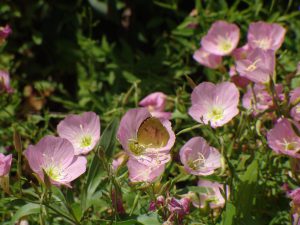
I can always find bees and butterflies on my pink evening primrose.
I brought a few rhizomes with me to my new house. If they survived winter, I will plant them in a bed with Autumn sage and native gaura. And I will not mind if my pink evening primrose escapes into my landscape to form colonies that compete with my Bermuda grass. I’ll be cheering for it.
Meet Leslie Miller
Leslie Ann Miller shares 3.5 acres in rural Oklahoma with birds, butterflies and wide variety of animals. She is currently transforming her yard with plantings…
Leslie's Recent Posts
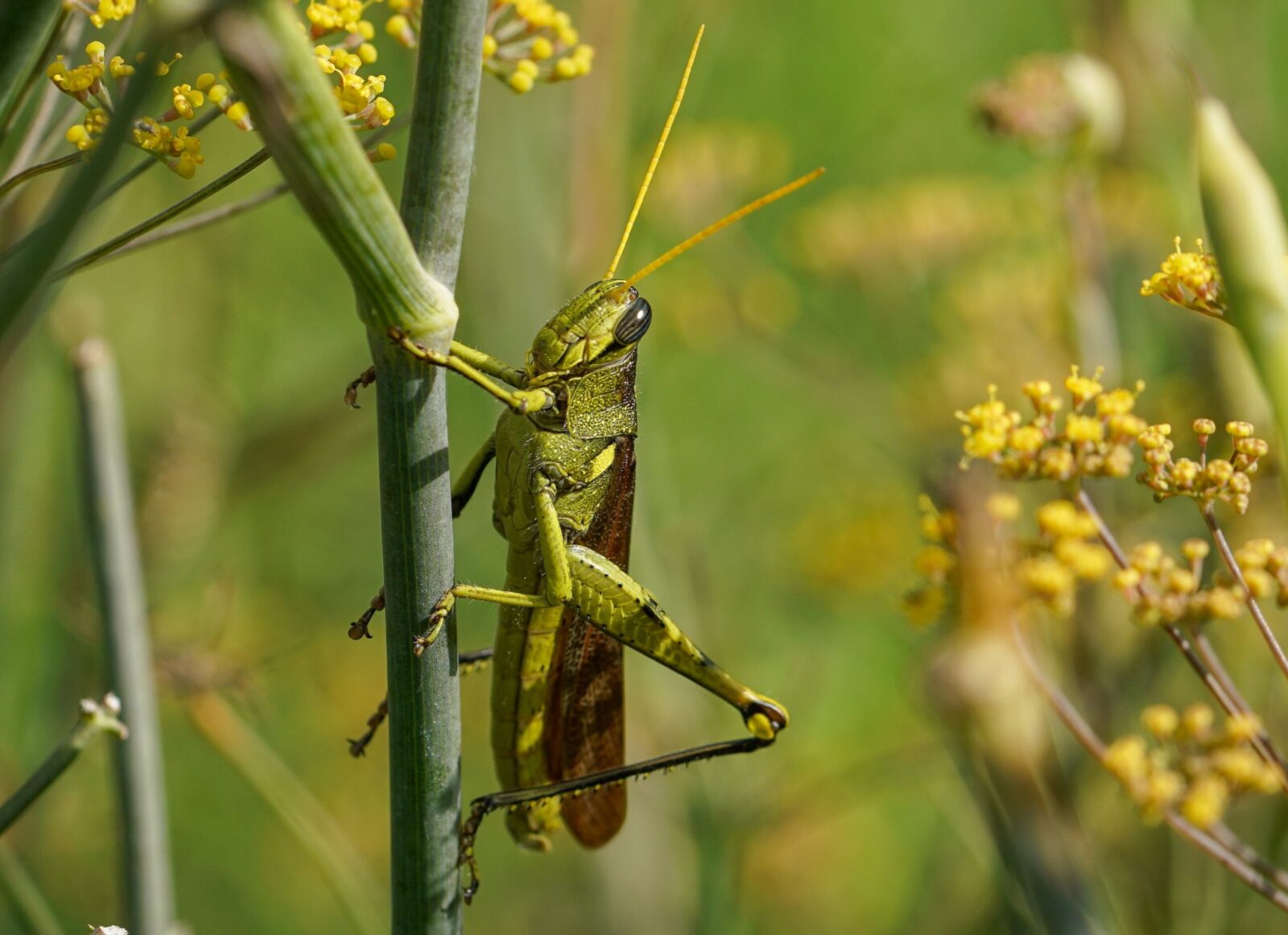
Grasshoppers and how to control them
